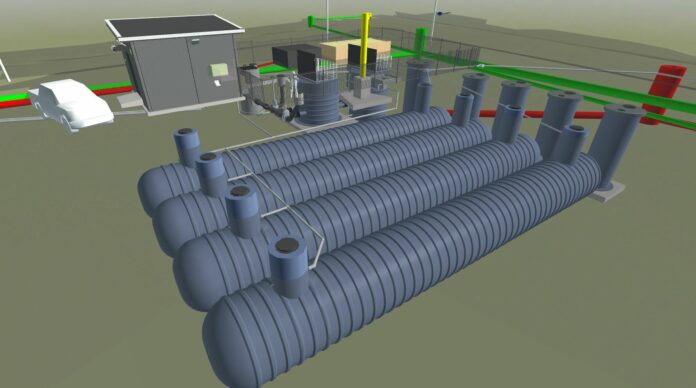
Upgrade required as population in the area is expected to grow by more than three times due to planned development in the next 50 years.
Work has begun on Watercare’s new wastewater pump station in Panmure, Auckland, the first stage of a $49 million infrastructure programme that will cater to the area’s population and reduce frequent overflows.
Digging for the wastewater pump station was about to kick off on the corner of Dunkirk Road and Tangaroa Street.
The pump station is the first of three infrastructure projects Watercare and Kainga Ora have planned for the area, and is a key government-funded shovel-ready project.
By working with Fulton Hogan, the agencies plan to deliver these infrastructure projects in two stages over the next eight years.
The projects include a new gravity main as well as a new pipeline connection that will create a more direct route for the increased flows into the Eastern Interceptor near Jellicoe Road.
Key projects
Watercare project manager Jason Salmon says these projects are key to catering for the current and future growth in Panmure and the surrounding suburbs.
“In the next 50 years, the population in the area is expected to grow by more than three times due to planned development.
“This new pump station and wastewater gravity main gives us the extra capacity we need in our network to accommodate the rapidly-growing population.
“The pump station will be able to handle flows of 225 litres per second — 40 litres per second more than its predecessor — and will have a 650,000-litre underground storage tank.
“Having this storage facility will significantly reduce overflows that can end up in the Tamaki River.”
Salmon says the design of the pump station, half of which is visible to the public, is not only practical, but sustainable.
Sustainable materials
“By working collaboratively with our construction and design partners, we were able to land on a design that not only reduces our concrete usage, but includes more sustainable materials like Glass Reinforced Plastic (GRP) which will allow us to cut carbon dioxide emissions by 1400T.
“To make the build more sustainable we have substituted traditional steel construction fencing with weather-bearing hoardings made from a culmination of timber, plasterboard, packaging, metal and other recycled plastics from SaveBoard,” Salmon says
He thanks the public for their patience with the construction of the new pump station, especially with the road closures on Dunkirk Road between Tangaroa and Tobruk Roads.
Kainga Ora infrastructure manager Shamir Ali says they are pleased to be working collaboratively with Watercare to deliver these important projects for Tamaki.
10,500 new homes to be delivered
“The Tamaki large-scale development, which is being delivered by Kainga Ora and the Tamaki Regeneration Company, will see 10,500 new homes delivered over the next 15 years,” Ali says.
“In addition to this, the private sector is forecast to build another 4000 houses within the Tamaki boundary.”



